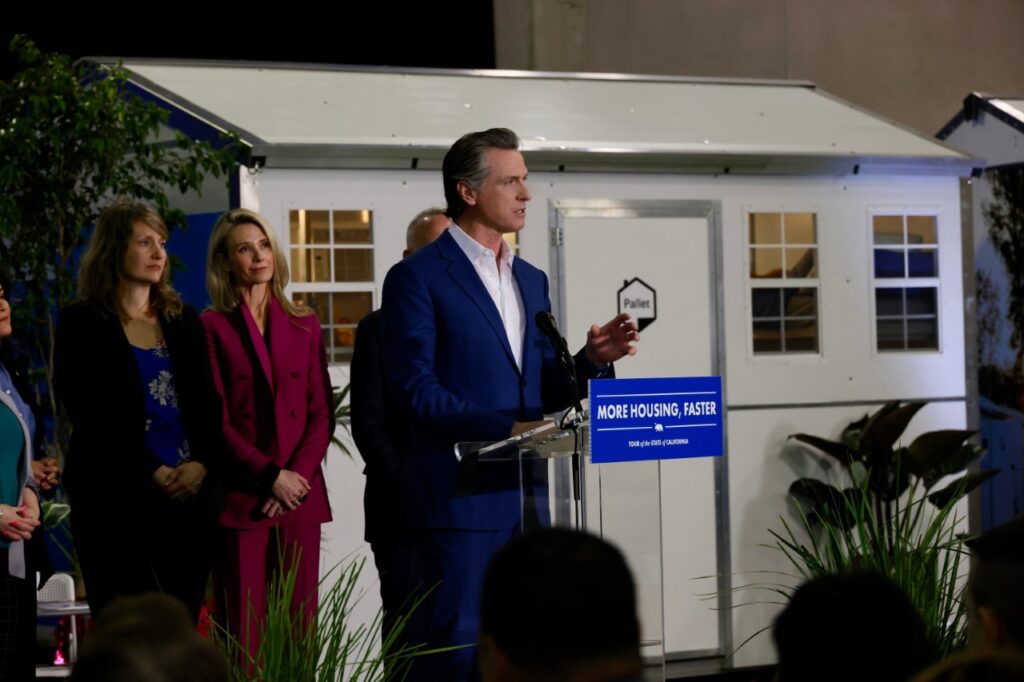
In March 2023, Governor Gavin Newsom promised to tackle California’s rising homelessness issue by approving the construction of 200 tiny readymade homes in San Jose. But, in a surprising turn of events, Newsom’s administration reversed this commitment.
Instead of constructing 200 tiny homes as initially planned, the state is providing the city with a $12.7 million check to build the homes. These homes were promised to be built without extra costs to city taxpayers. Unfortunately, this sudden change has made it difficult for cities to get funding and find alternative ways to address the issue of homelessness.
What caused this sudden change in plans? Let’s delve into the reasons behind it.
The Growing Population of Homeless Residents
In California, over 115,000 individuals live on the streets, in vehicles, in abandoned buildings, or in poor living conditions. Newsom’s program in 2023 was designed to address the homelessness crisis. The proposed tiny homes were less expensive and easier to build.
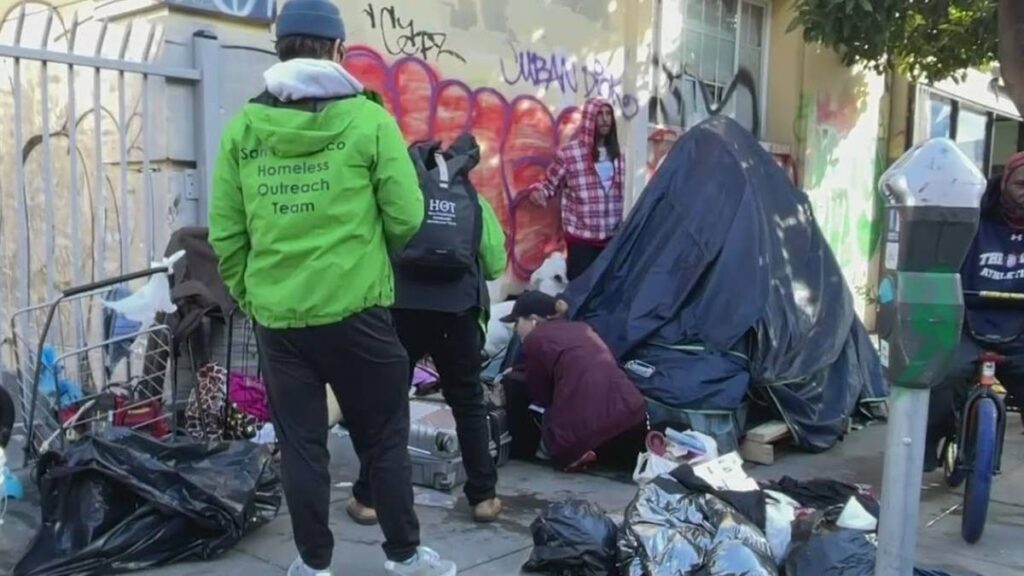
But more importantly, it would offer one or two rooms where people could stay temporarily, waiting for permanent housing solutions.
ALSO READ: California’s Economic Struggles Under Gavin Newsom Sends a Warning to the Rest of the Country
The Initial Newsom Program
This strategy was popular among officials seeking an ethical solution to increasing encampments on city streets, sidewalks, parks, and vacant lots. During his initial visit to Sacramento, Newsom acknowledged “how angry we are as Californians about what’s going on in the streets and sidewalks in our state.”

The new program was structured to decrease homelessness in the state by 15% by 2025. It would also make cities and counties across California eligible for $1 billion in additional funding.
The Administration Pulled Out on Its Promise
However, the program was too good to be true. Now, government officials have backed away from the project. Instead of delivering the homes themselves, the state will send the city a check for $12.7 million to fund their construction.

POLL — Should the Government Increase Taxes on the Wealthy To Reduce Economic Inequality?
To ensure the construction of the homes, officials suggested that San Jose may need to take on the responsibility of handling the development plan and the design rather than relying on the state.
The Fraction of Funds Offered Were Insufficient
San Jose officials expressed concerns that the allocated funds are insufficient to cover the project’s expenses. They stated they would need to gather an additional $5 million to $10 million to lease the land where the homes will be located.

ALSO READ: “Illegals Are Crushing the Country!” Elon Musk Says About His Criticism of US Migrant Crisis
This land is a six-acre empty parcel adjacent to the Santa Clara Valley Transportation Authority’s Cerone work yard in North San Jose. Furthermore, funds would be needed to cover the project’s future operating and maintenance costs.
San Jose’s Mayor Expressed Gratitude Regardless
The $12.7 million might be enough to build the 200 tiny homes, but city officials say it could slow things down if San Jose takes charge of planning instead of the state.
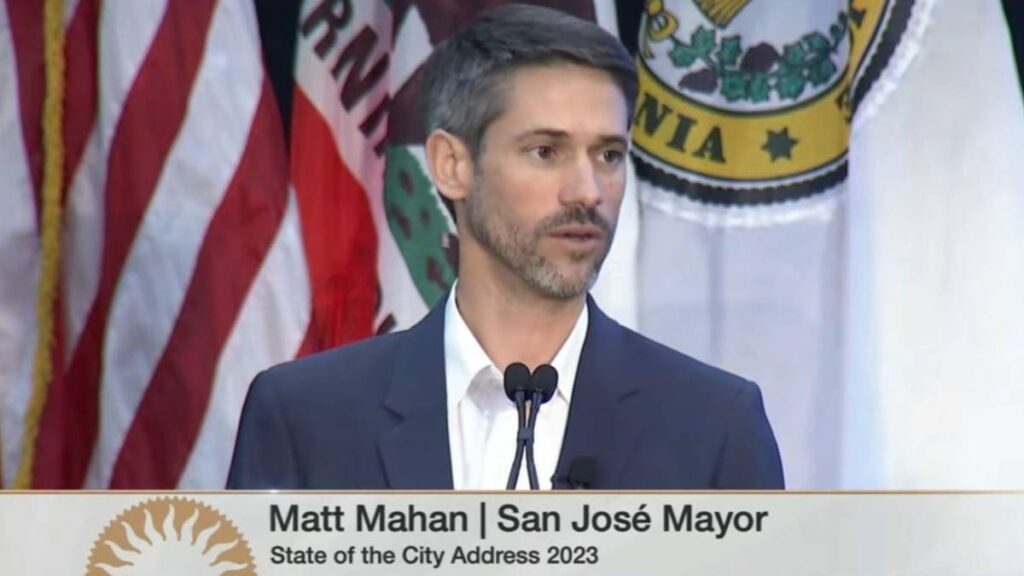
“We’re pushing full steam ahead with Cerone and the hundreds of other safe, dignified units we have in the pipeline — we have approval from VTA and support from the Council and residents,” San Jose Mayor Matt Mahan said in a statement. “We are grateful for the governor’s financial support and continued partnership in helping alleviate the crisis on our streets.”
The Houses Are Expected to Cost at Least $26 Million in Total
Initially, the state intended to cover construction costs, leaving San Jose responsible for security, case management, and other services. However, with the money provided by the state, San Jose will still require additional funds for operational costs and supportive services.
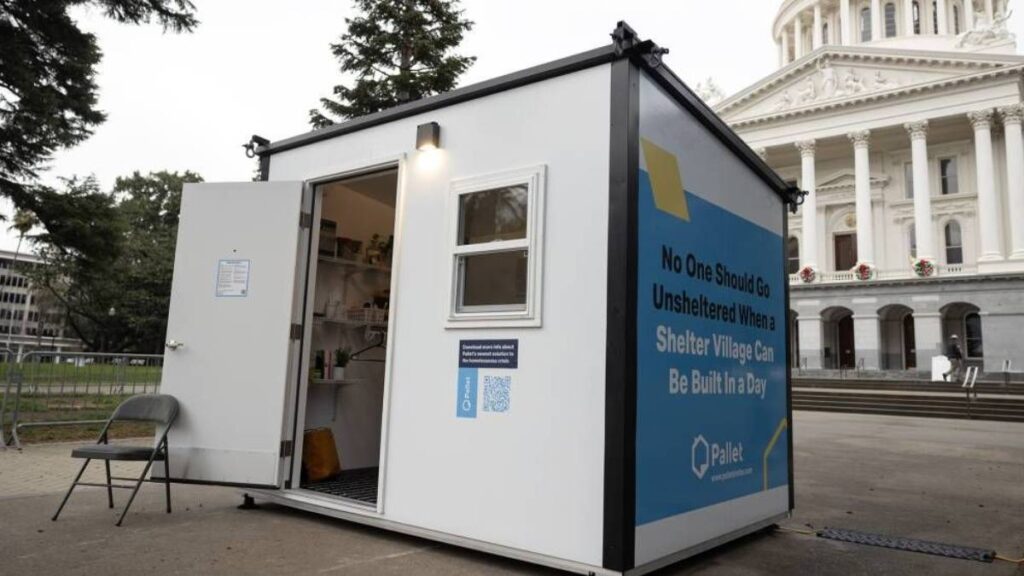
“It was going to cost $12.7 million either way—the question is whether we signed the paper or they signed it,” said a Newsom administration representative.
San Jose Mayor’s Ongoing Battle to Address Homelessness
The representative’s statement continues: “From our perspective, we are giving folks millions of dollars in capital spending to give them the capacity to deliver housing and services to the folks who need it most.”

Mahan, who’s running for reelection in March, wants to gain public support by reducing the number of homeless people in San Jose. Right now, there are about 4,411 homeless residents in the city.
Tiny Homes Gained Popularity in California
The number is now 11% lower than last year. Mahan says this drop happened because the city built many tiny homes and other temporary shelters. “Besides the Cerone site funding, San Jose is building three more temporary housing sites.”

These will offer 1,439 beds for temporary housing, meant to assist people until they find permanent homes. The trend of ‘tiny homes’ is not new; it has grown in popularity across California in the past five years.
Not Everyone Accepts Tiny Homes as a Solution
While some view tiny homes as a potential solution, they may not fully address the growing issue. The success of tiny homes hinges on factors like execution, community backing, and coordination with support services.

Critics argue these homes lack essential facilities and on-site services for long-term stays. They also worry about the cost of maintaining each unit.
The Worth of the Tiny Homes
Residents of these units won’t pay rent or cover the costs of on-site social services. Initially, the state was expected to handle these expenses, but with Newsom’s recent shift, the burden now falls on the city.
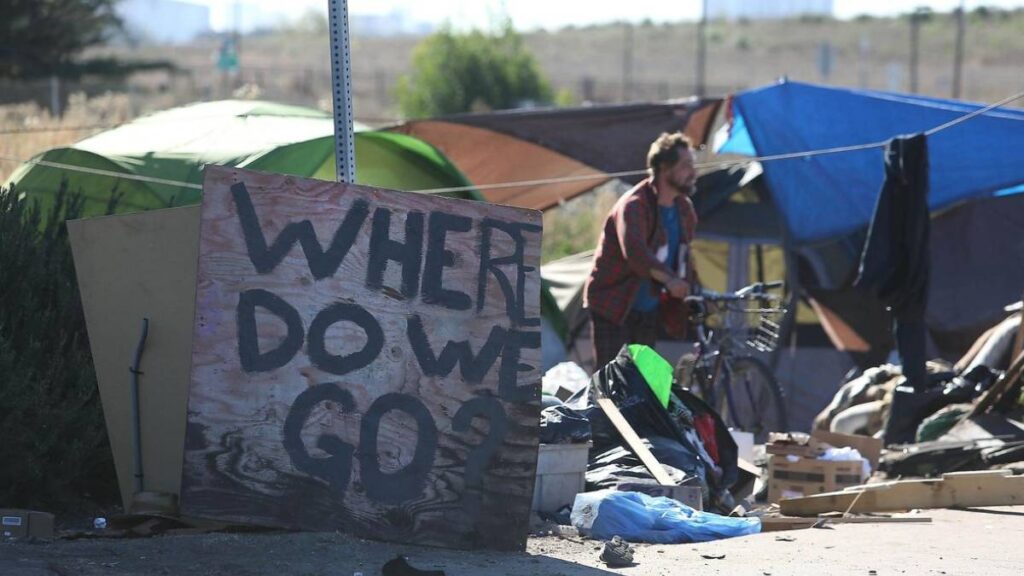
Presently, San Jose shoulders around $26,000 annually for each interim housing unit. With the existing network of 1,028 units, the city’s expenditure is $26.7 million. If more units are added, the program’s expenses could soar to $60 million by 2030.
Four Cities Chosen for State Program
San Jose isn’t the sole beneficiary of the state program for tiny homes. The initiative promised to construct 1,200 tiny homes across four Californian communities: 500 in Los Angeles, 350 in Sacramento, and 150 in San Diego County.
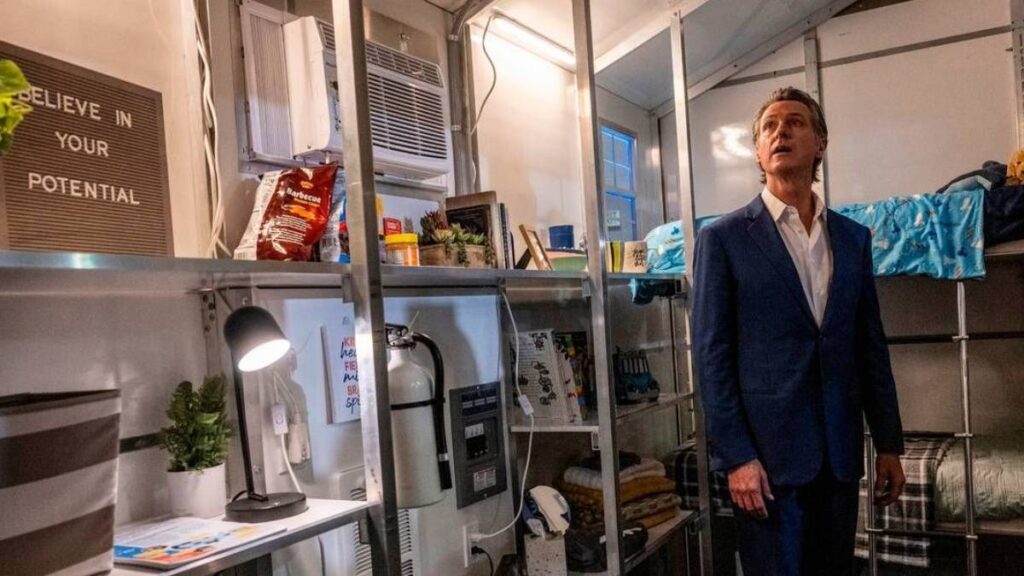
For this project, the state focused on communities struggling with severe homelessness.
Introducing a Fresh Approach to the Housing Crisis
In October 2023, the California Department of General Services chose six companies to construct the units, as reported by CalMatters. The four cities selected for the state program and any other California cities seeking to finance tiny homes must coordinate with General Services.
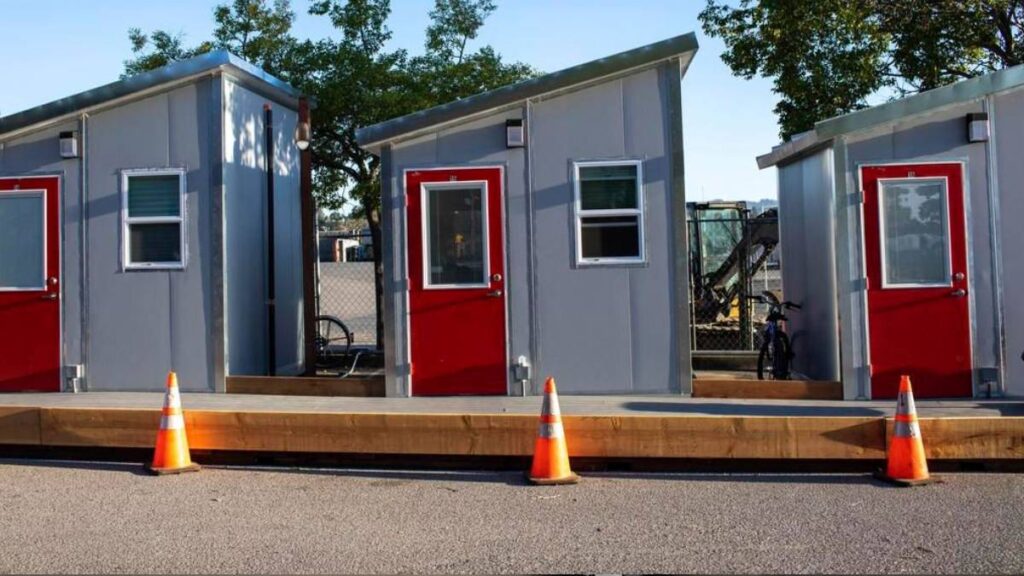
By streamlining the processes, General Services can speed up the construction of tiny homes in cities heavily affected by homelessness.
You Might Also Like:
Kanye West Tells Kim Kardashian to Take Their Kids Out of Their School
Police Confirm 4 Dead, 3 Injured in California House Party Shooting
Pentagon Leak Defendant Jack Teixeira Faces Years in Prison After Pleading Guilty
“You Hate Americans!” Critics Slam President Biden Over His Handling of Migrant Crisis
California’s Economic Struggles Under Gavin Newsom Sends a Warning to the Rest of the Country
